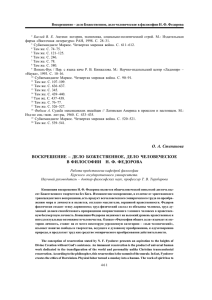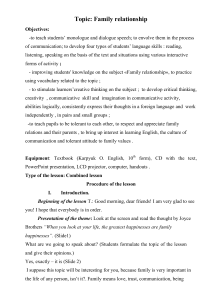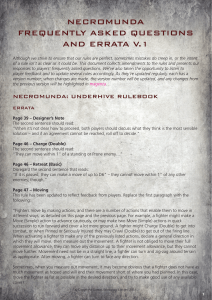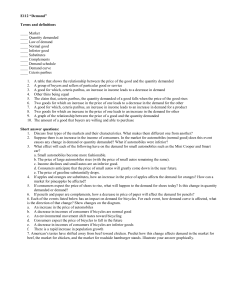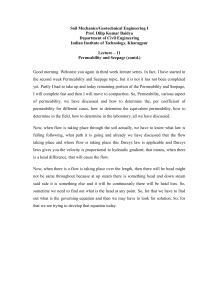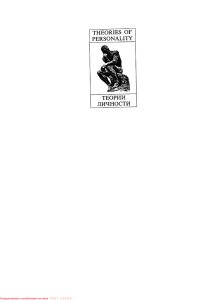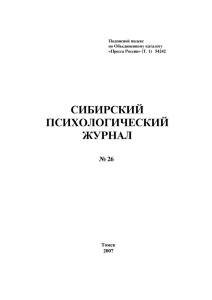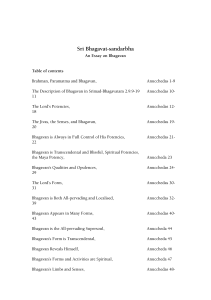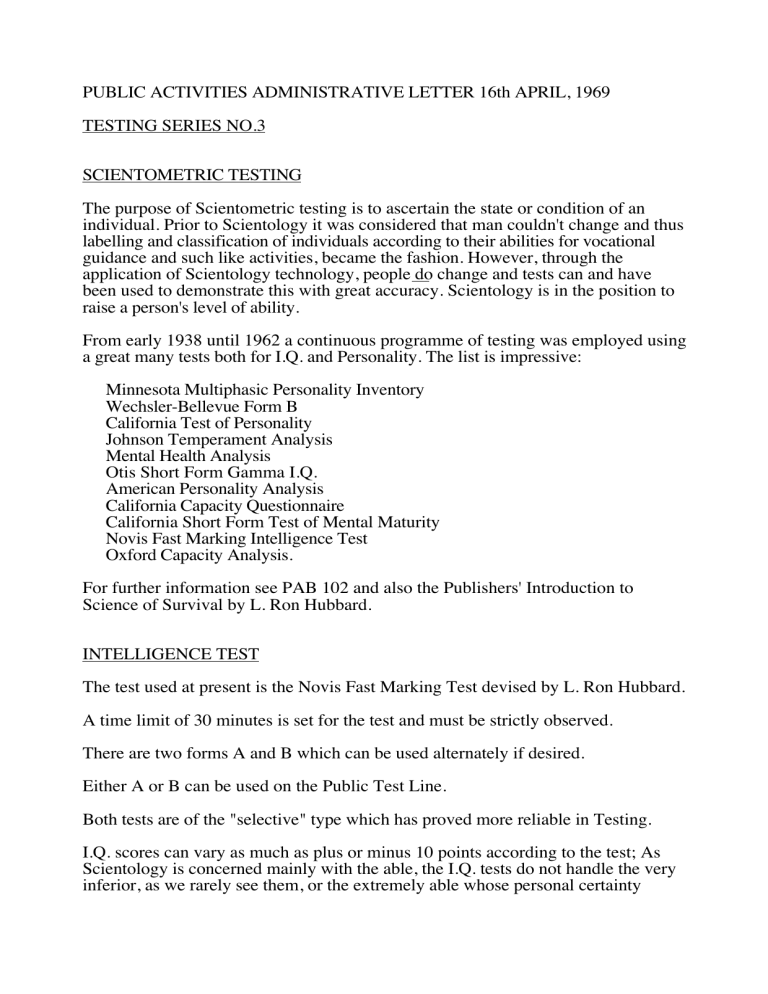
PUBLIC ACTIVITIES ADMINISTRATIVE LETTER 16th APRIL, 1969 TESTING SERIES NO.3 SCIENTOMETRIC TESTING The purpose of Scientometric testing is to ascertain the state or condition of an individual. Prior to Scientology it was considered that man couldn't change and thus labelling and classification of individuals according to their abilities for vocational guidance and such like activities, became the fashion. However, through the application of Scientology technology, people do change and tests can and have been used to demonstrate this with great accuracy. Scientology is in the position to raise a person's level of ability. From early 1938 until 1962 a continuous programme of testing was employed using a great many tests both for I.Q. and Personality. The list is impressive: Minnesota Multiphasic Personality Inventory Wechsler-Bellevue Form B California Test of Personality Johnson Temperament Analysis Mental Health Analysis Otis Short Form Gamma I.Q. American Personality Analysis California Capacity Questionnaire California Short Form Test of Mental Maturity Novis Fast Marking Intelligence Test Oxford Capacity Analysis. For further information see PAB 102 and also the Publishers' Introduction to Science of Survival by L. Ron Hubbard. INTELLIGENCE TEST The test used at present is the Novis Fast Marking Test devised by L. Ron Hubbard. A time limit of 30 minutes is set for the test and must be strictly observed. There are two forms A and B which can be used alternately if desired. Either A or B can be used on the Public Test Line. Both tests are of the "selective" type which has proved more reliable in Testing. I.Q. scores can vary as much as plus or minus 10 points according to the test; As Scientology is concerned mainly with the able, the I.Q. tests do not handle the very inferior, as we rarely see them, or the extremely able whose personal certainty rarely needs validating by such means. The majority of people tested fall into the range of Normal and Superior with a few Very Superior individuals. The scales and classification used in the tests compare quite satisfactorily with tests of a similar nature. TEST SCORING The Novis Fast Marking Test is somewhat similar to the Otis Test. In the Novis the I.Q is obtained as follows: Male I.Q. - Number correct plus 75. Female I.Q. - Number correct plus 70. CLASSIFICATION I.Q. DESCRIPTIVE CLASSIFICATION 135+ 110 -134 100 -109 90 - 99 80 - 89 - 79 Very Superior Superior High Average Low Average Inferior Very Inferior Inferior: Difficulty solving problems. % POPULATION 5% 10% 35% 35% 10% 5% Low Average: Can follow directions if not too complex and only just gets by. High Average: Does well in carrying out plans and gets by fairly well. Superior: Can take advantage of opportunity and with application can progress rapidly. However a high intelligence is only useful so long as there is data available to which it can be applied. Very Superior: Indicates the potential of being able to engage in the highest quality of creative or directive activities. PERSONALITY ANALYSIS The American Personality Analysis or the revised English equivalent, the Oxford Capacity Analysis, devised by Julia Lewis, is a "self report" test devised by a Scientologist for Scientological purposes and is more advanced and accurate than any other similar test. The purpose of the Test is to provide a reliable measurement of the various temperamental factors which combine to produce the behaviour tendencies of an individual and has ten personality traits over ten dichotomies of those traits. This test, combined with a thorough knowledge of Scientology, will quickly lead to an accurate assessment of the factors which need to be resolved in order to provide the greatest benefit to the individual being tested. Everyone who takes a Personality Analysis receives some benefit. Even without Scientology it sometimes helps to be observant of where one is being too far out of line with optimum attitudes. The word trait is used to indicate a set of behaviour patterns and tendencies sufficiently well defined as to be measured and effectively used. The questions which go to make up the various traits are based on the individual's reactions to many different life situations. Attempts at wilful defeat of the test by trying to answer better or worse than one really is, are not usually found to be a factor in the measurement. If this does happen, the answers are still valid as they provide the evaluator with a measurement as to what the individual considers good or bad. Specific uses of the test are varied and can include the following, although they are not extensively used now: 1. As a before and after processing or training. This is no longer done. 2. For vocational guidance and occupation selection. 3. For selection of employees. 4. Matrimonial selection. 5. In education to detect individuals in need of processing. 6. The diagnosis of the principal factors involved in problems of unhappy marriages, inferiorities, delinquency or problem children, unhappy parent-child relationships and various other social problems. The main use is on public lines to get a person from low awareness levels to Need of Change and Demanding Improvement. Test results are usually reported in some numerical form, for example the total number of questions answered correctly on a true-false basis. The numbers obtained in this way before they are converted to any other form are referred to as "raw scores". An individual's score is presented in graph or Profile form. TEST SCORING Inspect the answer sheet as a preliminary to scoring. Any inadequately entered marks, incompleted erasures or omissions should be corrected before scoring. 1. If two extremes are marked for the same question erase both and mark the middle column. If the middle and one extreme are marked, erase the middle mark. 2. If there is no mark, mark the middle column with a cross and check the trait. If there is more than one omission on any one trait the answer sheet should be returned for completion if possible. 3. If more than 50% of the middle column is marked the test is not valid except to show that the individual is hung up solidly on many maybes and has no certainty, or is unwilling or unable to think through on the question (comm lag). Usually it will be an inability in these cases. 4. To score, place the score sheets over the answer sheet, using Trait A scoring sheet. Add up all the marks showing in the top half of the sheet and record for Trait A. Now do the same for the lower half, recording for Trait B. Repeat with the remaining sheets. 5. The score should be checked by adding once forward and once back as accuracy is essential. 6. Select the percentile table as to age and sex of the individual being tested. For each Raw Score (obtained by adding the marks shown on the stencils) record the corresponding percentile. 7. Plot these percentiles on the profiles by placing dots on the parallel lines for the scores for each trait. Draw a line to connect these points. BASIS OF ANALYSIS It is, of course, not practical to set down everything concerning the APA/OCA. It would cover the major part of Scientology. The secret is to know the fundamentals thoroughly and from a sound knowledge of the subject be able to deduce, interpret and evaluate. It is important to understand that this test is an analysis of Personality and not merely a collection of traits. Thus a graph must be taken as a whole, reading one characteristic in its relationship to others. This relationship is called a Syndrome. (See the section on this.) Hear LRH tape "Havingness Quality of Reach" for data on valences. The simplest way to read a profile is to have a stable datum against which to align other data. This is provided by column D which shows the degree to which a person is certain of himself. It will be noted that Psychos frequently have this as their highest point with all the others creeping along the bottom. Such a syndrome means that the person is quite certain in himself that this is the way things are. Certain he is out of control, certain he is miserable, certain he is nervous and apprehensive. Here you will find "euphoria" and other extreme manifestations of aberration. This shows up in Random Graphs where the only other trait is F. For convenience, it is possible to read percentiles as percentages, although this is not strictly correct. The profile is divided into two sides with 0 (zero) percentile being the mid point. Roughly speaking, any point on the minus side can be considered to be desirable of change. Any point which falls below -75 is indicative of urgent need for improvement. Any trait on the plus side is acceptable, the most desirable being around +75. Before attempting to read a profile it is essential that the evaluator have a thorough knowledge of the individual traits and syndromes as well as a good evaluation procedure. It also helps to have model graphs drawn up indicating the various syndromes. The profile reveals to what extent the individual is playing the game called LIFE. Well in the plus side indicates degrees of good participation. Middle shows poor participation - a sitter on the fence type. Low shows poor or non-participation. TRAIT CHARACTERISTICS * Indicates the most real and frequently used evaluative statements. TRAIT A PLUS: STABLE. ORIENTED STANDARDS. * 1. High standards. Knows what he wants and how he wants things to be. 2. Makes plans and carries them out. 3. Can change mind easily, but on own determinism. 4. Deliberate in actions, but good judge of situations and therefore mostly tactful and remains out of serious trouble. 5. Does things systematically. 6. Adapts readily. 7. Keeps promises where possible. 8. Is stable and therefore a steadying influence. 9. Starts easily. 10. Not put out for long by any upsets - quickly returns to normal. 11. Not easily swayed by others. 12. Good self mastery. 13. Good concentration. * 14. Good stable data level - knows the rules of the game. MINUS: UNSTABLE. DISPERSED. IMPULSIVE. * 1. No stable data on which to make decisions - does not know the rules of the game. * 2. Confused. * 3. Poor concentration. 4. At -60 or below, individual is hypnotic and body can be monitored without change of mind. All insane very low on this. 5. Out of control. 6. Impulsive in actions. Gets into trouble a lot as does things without thinking. 7. Careless about things - money, health, possessions. 8. Hard to get started. 9. Tactless. 10. Never keeps promises. 11. Not a good judge of situations. 12. Easily upset. 13. Never plans things and carries them out. 14. Doesn't follow directions - can't duplicate. TRAIT B PLUS: HAPPY. * 1. Cheerful, satisfied. * 2. Is achieving goals. 3. Feeling of well-being. 4. Can join in the fun or not as he wishes. 5. Not a spoil sport. 6. Recovers rapidly from bad news. 7. Finds life worth living. 8. Doesn't usually suffer from bad dreams or nightmares. 9. Considers there is plenty of opportunity. 10. Likes others to be happy. 11. Smiling disposition. MINUS: DEPRESSED. UNHAPPY. * 1. Goals not well aligned or is not making the ones he has. * 2. Disturbed by failures and dwells on them. 3. Damaging in all business and social relationships. 4. A wet blanket - a spoil sport. 5. Doesn't recover from bad news rapidly. 6. Has bad dreams. 7. Life is not worth while. 8. Can't join in the fun at his own wish. 9. Feels inferior. 10. Glum - sad at times. 11. Ponders on past misfortunes and illnesses. 12. Considers there is not much opportunity. TRAIT C PLUS: COMPOSED. * 1. Relaxed. Not a worrying type. 2. Calm. 3. Good body tone. 4. Good voice control. 5. No phobias. 6. Not easily surprised. 7. Steady. 8. Sleeps well. 9. Not easily distracted. 10. Returns to normal quickly after an upset. 11. No nervous habits. 12. Good muscular control. MINUS: NERVOUS. SCATTERED. * 1. A worrier. * 2. Tense - doesn't easily relax. 3. Phobias. 4. Stuck thoughts. 5. Easily frightened. 6. Nervous habits. 7. No voice control. 8. * 9. Easily distracted. Environment acts as a threat - feels there is something going on which he is not able to control. 10. Increased fatigue from applying effort. 11. Doesn't easily return to normal after upsets. TRAIT D PLUS: PERSONABLE. CERTAINTY LEVEL. CONSISTENT. 1. Reliable. 2. Good certainty on self. * 3. Even temperament. * 4. Consistent - not impulsive. 5. Can withhold. 6. Responsible. 7. Aware of values. 8. Can reason logically. 9. Knows what he is doing. MINUS: UNCERTAIN. IMPULSIVE. INCONSISTENT. 1. Unable to withhold. 2. Compulsive. * 3. Unreliable. * 4. Unpredictable. * 5. Impulsive. * 6. Changeable without reason. 7. Only sporadic liveliness. * 8. 9. Inconsistent. Lacks certainty. 10. Constantly happy without there being any reason for it. TRAIT E PLUS: ACTIVE. IN MOTION. 1. Energetic. 2. Will take responsibility. 3. Has initiative. 4. Attentive. 5. Has plenty to do. Full days and always on the go. * 6. Lively. * 7. Has a wide variety of interests and activities. 8. Not pushed around by others - will take action. MINUS: STOPPED. REACTIVELY RETARDED. * 1. Passive. Lazy. A plodder. 2. Lacks initiative. 3. Few interests and activities. 4. Quiet - reserved. 5. Hard to get started. 6. Pushed around. 7. A waiter. 8. Avoids responsibility. 9. Not much to do - days not full. TRAIT F PLUS: CAPABLE. OVERT. AGGRESSIVE. 1. * 2. Willing to cause things. Self-assured. 3. Does something instead of resigning himself to the situation. 4. Emphatic. 5. Dominant. 6. Overt. 7. Has good idea of own capabilities. 8. Free about expressing opinions and feelings. 9. Maintains poise. MINUS: INHIBITED. 1. Unwilling to cause things. * 2. Meek. * 3. Doubts own fitness and runs himself down. 4. Covert. 5. Easily dominated. 6. Hides feelings. 7. Has been stopped many times. 8. Keeps opinions to self. TRAIT G PLUS: RESPONSIBLE. OBJECTIVE. CAUSE. * 1. Extroverted. 2. Can admit cause and not blame. 3. Able to see what he has caused. 4. Can see others' points of view. 5. Makes sound decisions. 6. Not prejudiced. 7. Impartial. 8. Not jealous. 9. Able to make an independent decision based on facts. 10. Capacity for initiative - sees something needs doing and does it. 11. Logical and scientific. MINUS: IRRESPONSIBLE. SUBJECTIVE. BEING EFFECT. * 1. Introverted. * 2. Prejudiced. * 3. Highly self-centred - may think others are working against him. 4. Has touchy points. 5. Makes unsound decisions based on emotions and not facts. 6. No initiative. 7. Avoids responsibility. 8. Resented by others and damages relationships with other dynamics. TRAIT H PLUS: LOGICAL REASONING. APPRECIATION. 1. Understanding. * 2. Not hard to please. * 3. Thinks well of most people. * 4. Not suspicious. 5. Pleasant. 6. Can criticise but is also able to accept. 7. Accepts others as they are, although he has a good reality on them. 8. If he cannot do what he wants, he finds a substitute. MINUS: CAPACITY FOR ERROR. HYPERCRITICAL. 1. Not easily able to estimate others. 2. Invalidative. * 3. Critical of others and their actions - goes to great length to invalidate others' best efforts. * 4. Suspicious of others. * 5. Intolerant. 6. Tactless. 7. Resented by others and resents others. * 8. 9. Has automatic attack mechanism (often suppressed). Cannot accept others readily. 10. Annoyed if he cannot do what he wants to. 11. A grumbler. TRAIT I PLUS: APPRECIATIVE. EMPATHY. * 1. Friendly. * 2. Courteous. 3. * 4. 5. * 6. Truthful. Warmly responsive to the needs of others. Able to see how others feel in a situation. Considerate towards others. MINUS: LACK OF ACCORD. COLD. * 1. Hard boiled. * 2. Cannot make friends easily. 3. Not courteous. Impolite. 4. Deceitful. 5. No idea of the realities of others. 6. Not concerned with others' feelings. * 7. Not considerate in demand on others. 8. Not aware or concerned with how others fare. 9. Feels that some people don't deserve assistance. 10. Uses punishment. 11. Cynical. TRAIT J PLUS: COMMUNICATION LEVEL. 1. Expressively warm-hearted. 2. Friendly. 3. Cheerful. * 4. Good in company. * 5. Plenty of friends and acquaintances. 6. * 7. 8. Affectionate. Cordial. Free in expressing feelings and opinions. MINUS: WITHDRAWN. * 1. 2. * 3. Individuated. Introverted. Poor in company. 4. Not many friends and acquaintances. 5. Not affectionate. 6. Hides feelings. 7. Not cordial. SYNDROMES These are signs and symptoms which occur together and characterise a condition. On the profile they show up the basic lie of the Bank. This is the condition which persists and which the person is dramatising. 1. 2. 3. 4. 5. A B C D E F G H I J - - Neurotic. Stuck heavily with past losses. Frequently abandoned in childhood. Extremely unstable, unreliable and impulsive. + Angry outbursts. Temper. - - - + + + - - - - Capricious, irresponsible, self-centred, inverted on all dynamics. A potential murderer. + Actively dispersed. - If remainder of graph is reasonable, indicates that a person could be in a 1.1 environment where his reality is cut and he cannot communicate because it will be twisted and used against him. + Perfectionist. - Apprehension and anxiety. + Feelings of inferiority. + Riding a manic - glee of insanity. Present time problem. + Can't withhold. Compulsive. + Compulsive extrovert. - - Doesn't grant beingness. - - Hormone deficiency. May need medical treatment. - If remainder of the graph is reasonable, the person may be on drugs or alcohol or being heavily suppressed. Lacks initiative. + + + Affectionate disposition. + - - Paranoid and psychotic. Very much effect. Lacking in accord and self-centred. + - Hard to get along with. - Introverted. Self-centred. + - Propitiation. - - + Poor employees. - - -F or middle F, high I, J and B = Sweetness and light. High A, middle D = Individual operates on stable data rather than personal certainty. Here is the "intellectual understanding". Most students will be seen to operate on this where the data is not completely owned by themselves. Middle A, high D = Not much stable data but what he has is owned and under control. + 80 A, + 50 D, + 75 E = Person is certain in himself of two thirds of his activity and the rest he handles on stable data. It can also mean that he handles a lot on present time evaluations and a lesser proportion by past experiences either analytical or reactive. + 90 G, + 90 I = Martyr complex, or else the person is lying. High C compared with others = Conditioned self-control due to strict upbringing where one must not show emotion of any kind or express any opinion. Couples with a middle or low F to indicate probable religious leanings. F higher than E = Not doing as much as he could. E higher than F = Person is doing more than he can comfortably and capably handle. Optimumly D, E, F should be in a straight line indicating that the person is handling his activity with capability and certainty. I higher than others = Person is too soft-hearted and an easy mark or "sucker". I positive = Empathy or compassion - ability to understand others' points of view - if all points are in the top area. If the rest is low it indicates sympathy where the person feels he would like to do something to help but can't. D higher than others = Euphoria - making the best of a situation in which he finds himself. Struggling with life and making very little out of it. The present social set-up allows the individual to cover up quite well and present a veneer of "there is nothing wrong with me". Also check question 22. If the answer is YES draw a circle around the point on Trait B. This indicates that this trait fluctuates. Random Male A between -38 B " -65 C " -63 D " +35 E " +45 = Test answered at random. No understanding no reality - no responsibility. and and and and and -95 -100 -96 -83 +3 F between G " H " I " J " +72 -55 -35 +18 +22 and and and and and +22 -92 -98 -90 -74 TOM MORGAN PES WW LRH: TM: :sb Copyright c 1969 by L. Ron Hubbard ALL RIGHTS RESERVED
